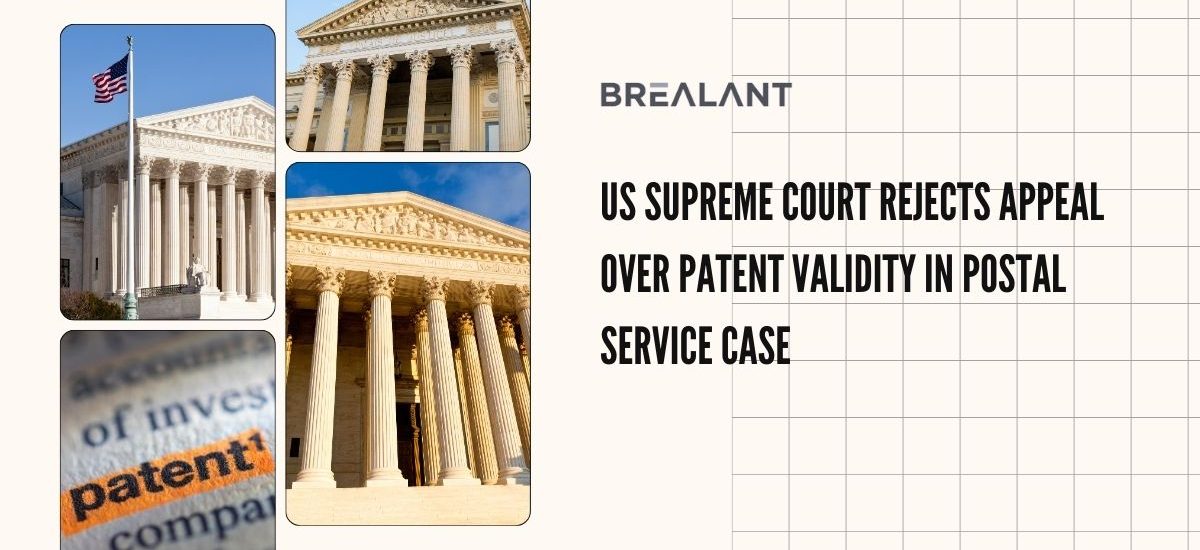



In a landmark ruling that affects government accountability and patent law, the US Supreme Court recently refused to consider an appeal concerning the legality of patents that the US Postal Service USPS) was contesting. The Court’s decision upholds a decision from a lower court and continues to influence the parameters of patent disputes involving federal agencies. Here, we examine this case’s history, legal contentions, and wider ramifications.
Return Mail Inc., a private company has patents on specific mail processing technology, and the USPS have a long-standing legal dispute that is the origin of this lawsuit. Return Mail alleged that the Postal Service had violated its patent on procedures for dealing with undelivered mail. The USPS responded by submitting a petition for a review under the America Invents Act (AIA) in an attempt to invalidate Return Mail’s patent. The AIA gives parties a way to contest the legality of patents through the USPTO’s (U.S. Patent and Trademark Office) processes. These processes, known as Covered Business Method (CBM) reviews, are intended to simplify disagreements over specific patent categories. Nevertheless, a crucial legal issue in this case, was whether the USPS or any other federal agency would be considered a “person” for the AIA, giving it the authority to start such a review.
The case passed through many court levels before reaching the Federal Circuit Court of Appeals. In a significant ruling, the government Circuit denied the USPS standing to contest Return Mail’s patent, holding that government entities are not “persons” under the AIA. The court’s interpretation depended on statutory construction, with judges carefully examining the AIA’s wording and historical background to ascertain Congress’s intentions.
According to Return Mail, permitting federal agencies to participate in these trials would create an unfair playing field and tip the scales against private patent holders. The Federal Circuit concurred, stressing that Congress’ definition of a “person” under the AIA did not specifically include government bodies.
Following the Federal Circuit’s ruling, the USPS requested that the US Supreme Court examine the case. According to the agency, the AIA’s goal of getting rid of outdated patents and maintaining a strong patent system is compromised when government organisations are not allowed to participate in CBM evaluations. In essentially upholding the Federal Circuit’s view without rendering a decision of its own, the Supreme Court declined to consider the appeal.
The Supreme Court frequently denies certiorari, a discretionary procedure to select which cases to consider. The Court normally considers less than 100 cases out of the thousands of petitions that are filed each year. Although it does not provide new precedent, the Court’s decision to dismiss the lawsuit upholds the Federal Circuit’s understanding as the supreme authority.
This ruling questions how government agencies interact with patent law. Federal agencies must use traditional court actions, while companies and private individuals can challenge patents through faster procedures at the USPTO. The ruling does not include federal agencies in the AIA’s definition of a “person.”
According to legal experts, this discrepancy may result in differences and inefficiencies. For example, even if the underlying patent is weak or invalid, a government agency accused of patent infringement may continue to fight the case for years in district courts. This situation can discourage innovation by raising legal expenses and delaying settlements.
However, supporters of the Federal Circuit’s ruling stress the necessity of shielding private patent owners from excessive government intervention. The decision maintains the balance intended by patent laws by guaranteeing that government agencies cannot use the AIA’s provisions against private entrepreneurs.
The Federal Circuit’s ruling emphasises the need to closely monitor patent issues involving government agencies for private innovators and businesses. The decision implies that federal agencies have certain restrictions on their legal choices, which may impact the formulation and handling of conflicts.
In addition, patent holders have to consider the wider strategic ramifications of defending their rights against the government. Although the decision strengthens safeguards for private entrepreneurs, it does not remove the dangers of drawn-out litigation. In certain situations, working with knowledgeable legal counsel and using alternate dispute resolution procedures can prove beneficial.
The US Supreme Court’s rejection of the USPS’s appeal is a turning point in developing the connection between government accountability and patent law. By sustaining the Federal Circuit’s reading of the AIA, the decision outlines the limits of agency authority and protects private patent holders’ rights.
As entrepreneurs, legislators, and legal professionals struggle with these problems, the Return Mail case is a powerful reminder of how closely innovation, law, and governance interact. All this can be very overwhelming for brand owners, but Brealant can help them navigate the legal intricacies with ease.